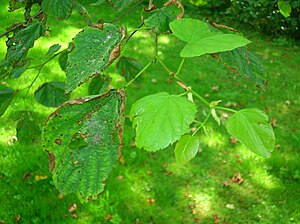Botanical Name : Feronia limonia
Family: Rutaceae
Subfamily: Aurantioideae
Tribe: Citreae
Genus: Limonia
Species: L. acidissima
Kingdom: Plantae
Order: Sapindales
Synonyms. Feronia elephantum, Feronia limonia, Hesperethusa crenulata, Schinus limonia
Common Names:
*Bengali) : bela, kait, kath bel
*(English) : curd fruit, elephant apple, monkey fruit, wood-apple
*(French) : citron des mois, pomme d’ elephant, pomme de bois
*(Hindi) : bilin, kait, katbel, kavitha
*(Lao (Sino-Tibetan)) : ma-fit
*(Malay) : belinggai, gelinggai
*(Thai) : ma-khwit
*Oriya: Kaitha
*Kannada: Belada Hannu / Byalada Hannu
*Telugu: Vellaga Pandu
*Tamil: Vilam Palam
*Khmer: Kvet
*Hindi: Kaitha or Kath Bel.
*Gujarati: Kothu.
*Sinhalese: Divul.
*Marathi: KavaTH .
*Javanese: Kawis or Kawista
*Sanskrit: Kapittha, Dadhistha, Surabhicchada, Kapipriya, Dadhi, Pu?papahala , Dantas?tha, Phalasugandhika, Cirap?k?, Karabhith?, Kanti, Gandhapatra, Gr?hiphala, Kas?y?mlaphala.
Habitat : It is native in the Indomalaya ecozone to Bangladesh, India, Pakistan, Sri Lanka, and in Indochinese ecoregion east to Java and the Malesia ecoregion.
Description:
Feronia limonia is a deciduous, slow-growing, erect tree with a few upward-reaching branches bending outward near the summit where they are subdivided into slender branchlets drooping at the tips. Bark ridged, fissured and scaly; spines sharp, 2-5 cm long on some of the zigzag twigs. Leaves alternate, 7.5-12.5 cm long, dark-green, leathery, often minutely toothed, blunt or notched at the apex, dotted with oil glands and slightly lemon-scented when crushed. Flowers dull-red or greenish, to 1.25 cm wide, borne in small, loose, terminal or lateral panicles. Fruit round to oval, 5-12.5 cm wide, with a hard, woody, greyish-white, scurfy rind about 6 mm thick, pulp brown, mealy, odorous, resinous, astringent, acid or sweetish, with numerous small, white seeds scattered through it. Feronia is a monotypic genus in the family Rutaceae. There are 2 forms, one with large, sweet fruits and the other with small,little showerish fruits.
Edible Uses;
The fruit is eaten plain, blended into an assortment of drinks and sweets, or well-preserved as jam. The scooped-out pulp from its fruits is eaten uncooked with or without sugar, or is combined with coconut milk and palm-sugar syrup and drunk as a beverage, or frozen as an ice cream. It is also used in chutneys and for making Fruit preserves jelly and jam.
Indonesians beat the pulp of the ripe fruit with palm sugar and eat the mixture at breakfast. The sugared pulp is a foundation of sherbet in the subcontinent. Jam, pickle, marmalade, syrup, jelly, squash and toffee are some of the foods of this multipurpose fruit. Young bael leaves are a salad green in Thailand. Indians eat the pulp of the ripe fruit with sugar or jaggery. The ripe pulp is also used to make chutney. The raw pulp is varied with yoghurt and make into raita. The raw pulp is bitter in taste, while the ripe pulp would be having a smell and taste that’s a mixture of sourness and sweet.
Food Value :
A hundred gm of fruit pulp contains 31 gm of carbohydrate and two gm of protein, which adds up to nearly 140 calories. The ripe fruit is rich in beta-carotene, a precursor of Vitamin A; it also contains significant quantities of the B vitamins thiamine and riboflavin, and small amounts of Vitamin C.
Medicinal Uses:
The fruit is much used in India as a liver and cardiac tonic, and, when unripe, as an astringent means of halting diarrhea and dysentery and effective treatment for hiccough, sore throat and diseases of the gums. The pulp is poulticed onto bites and stings of venomous insects, as is the powdered rind. Juice of young leaves is mixed with milk and sugar candy and given as a remedy for biliousness and intestinal troubles of children. The powdered gum, mixed with honey, is given to overcome dysentery and diarrhea in children. Oil derived from the crushed leaves is applied on itch and the leaf decoction is given to children as an aid to digestion. Leaves, bark, roots and fruit pulp are all used against snakebite. The spines are crushed with those of other trees and an infusion taken as a remedy for menorrhagia. The bark is chewed with that of Barringtonia and applied on venomous wounds.
Other Uses:
Ornamental: F. limonia is planted as a roadside tree near villages. Boundary or barrier or support: The tree is cultivated along field boundaries.
Disclaimer:The information presented herein is intended for educational purposes only. Individual results may vary, and before using any supplements, it is always advisable to consult with your own health care provider
Resources:
http://en.wikipedia.org/wiki/Limonia_(plant)
http://www.worldagroforestrycentre.org/sea/products/afdbases/af/asp/SpeciesInfo.asp?SpID=18044
http://www.herbnet.com/Herb%20Uses_UZ.htm
http://www.floracafe.com/Search_PhotoDetails.aspx?Photo=All&Id=1143
Related articles
- 6 Foods That Ruin Skin (and 4 That Can Save It) (bellasugar.com)
- You don’t have to add sugar to homemade marmalade, jam, jelly, or fruit butter (examiner.com)
- Canarium album(Chinese Olive) (findmeacure.com)
- The Universe In A Jar (iwantmymummy.co.uk)
- 2009 marc roy gevrey clos prieur (burgundy-report.com)
- How to make the best marmalade you’ve ever tasted (thefrugalcook.blogspot.com)
- A New Fresh Fragrance: Eau de Mangosteen (bellasugar.com)
- Tasting notes: *** Chez Ray Rodger’s Vineyard Syrah, Mendocino CA, 2008 (SR8V) (chezraywinery.blogspot.com)
- Rainy Processed Coffee (uclaislamicstudies.com)
- Sequana of Sonoma: New Pinot Noir Releases (i-winereview.blogspot.com)


























